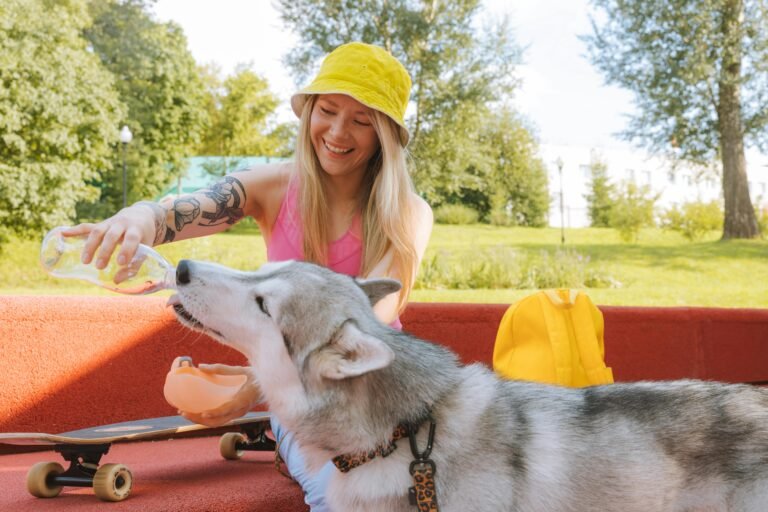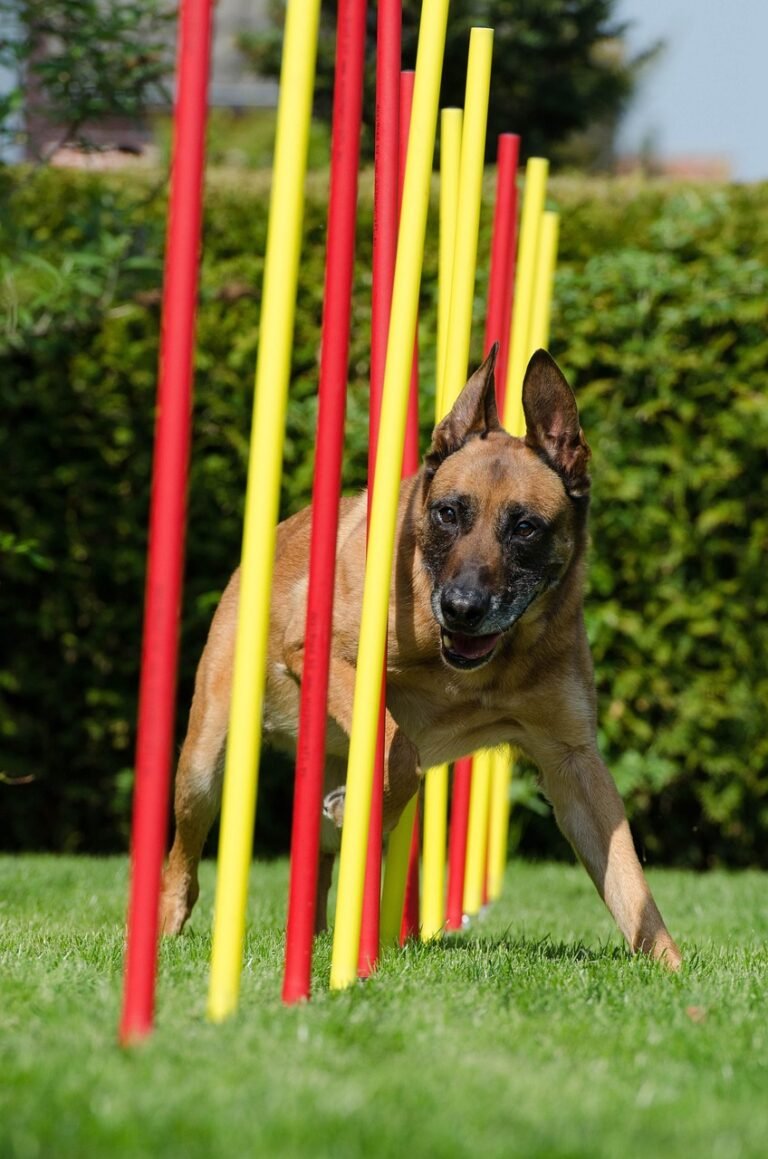Introduction to Dog Body Language
Understanding dog body language is crucial for any dog owner or enthusiast, as it serves as a primary means of communication for our canine companions. Unlike humans, dogs do not possess the ability to use spoken language to express their feelings; instead, they rely heavily on non-verbal cues to convey their emotions and intentions. By observing and interpreting these signals, dog owners can enhance their relationship with their pets and ensure a harmonious living environment.
Body language in dogs encompasses a wide array of gestures, postures, and facial expressions that can provide valuable insights into a dog’s emotional state. For instance, a wagging tail may indicate excitement or happiness, whereas a lowered posture may signal submission or anxiety. Recognizing these signs is essential for promoting positive interactions, as it empowers owners to respond appropriately to their dogs’ needs. More importantly, misinterpreting these cues can lead to misunderstandings, potentially resulting in fearful or aggressive behavior.
When dog owners become adept at reading their pets’ body language, they can better manage various situations, such as introducing their dogs to new environments or socializing with other animals. Understanding these communication signals helps foster trust and strengthens the bond between dog and owner. Moreover, interpreting dog body language can aid in recognizing signs of distress or discomfort, allowing for timely intervention and support.
As we delve deeper into the specifics of dog body language, it becomes clear that this knowledge is not only beneficial for building a rewarding relationship with a pet but also essential in ensuring the safety and well-being of both dogs and humans. The following sections will explore ten common signals displayed by dogs, providing further insight into their behaviors and emotions.
The Ten Common Body Language Signals
Understanding canine body language is essential for effective communication between dogs and their owners. Here are ten common signals that dogs exhibit, along with their meanings and contexts.
1. Tail Wagging: A wagging tail typically indicates excitement or happiness in dogs. The speed and direction of the wag can also provide insights; a broad wag often signifies friendliness, while a slow, low wag can indicate insecurity.
2. Play Bow: This playful stance involves a dog lowering its front legs while keeping its rear end elevated. It invites others to play and demonstrates a friendly demeanor, often accompanied by vocalizations or excited barks.
3. Raised Hackles: When the hair along a dog’s back stands on end, it signifies alertness and potential threat. This behavior can indicate excitement, fear, or aggression, depending on the dog’s overall demeanor.
4. Exposed Belly: A dog showing its belly is often displaying trust and submission. This position is usually an invitation for petting and signifies a relaxed emotional state.
5. Tail Tucked: A tucked tail typically indicates fear, anxiety, or submission. Dogs may display this behavior in stressful situations or when they feel threatened.
6. Ears Pinned Back: Dogs that pin their ears back may be feeling scared or submissive. This posture can indicate discomfort in situations that provoke fear or uncertainty.
7. Lip Licking: Dogs may lick their lips when feeling anxious or threatened. It’s a calming signal often observed in tense situations, indicating that the dog is trying to self-soothe.
8. Stiff Body: A rigid stance can signal aggression or fear. When a dog’s body becomes stiff, it may be preparing for confrontation or distress, depending on other accompanying body language.
9. Panting When Not Hot: Excess panting without a rise in temperature can indicate stress or anxiety. Dogs may resort to panting as a mechanism to cope with an uncomfortable situation.
10. Leaning Into You: When a dog leans against its owner, it often seeks comfort or reassurance. This behavior reflects trust and affection, demonstrating a bond between dog and handler.
Understanding these signals can vastly improve your relationship with your dog, as recognizing their emotional states will enhance communication and create a stronger bond.
How to Respond to Dog Body Language
Understanding how to respond to dog body language is essential for fostering a positive relationship with your canine companion. Each signal they display offers insights into their emotional state and needs, requiring appropriate reactions on your part. Incorrect responses may lead to confusion or stress for the dog, while appropriate responses can enhance trust and communication.
When a dog displays a playful posture, such as the play bow, this is an indication that they are inviting interaction. In such cases, you should reciprocate their energy by engaging in play. Simple activities like tossing a ball or engaging in a gentle wrestling match can strengthen your bond and affirm their feelings of safety and joy.
Conversely, if a dog exhibits signs of anxiety or discomfort, like raised hackles or a stiffened body, it is crucial to respect their space. In these situations, you should gently back away and offer calming words or soothing tones. Ensure that your body language is non-threatening and relaxed, as this can help the dog feel more at ease and understood. Giving them time to adjust without forcing interaction can pave the way for a more trusting relationship.
Additionally, if a dog’s tail is tucked between their legs, this often signifies fear or submission. A calm and gentle approach is necessary here. Speak softly to reassure the dog, and consider providing a safe space where they can retreat until they feel more secure. Avoid direct eye contact, as this can further intimidate them.
By responding appropriately to your dog’s body language, you demonstrate an understanding of their needs and emotions. This attentiveness can lead to a more profound bond built on mutual trust and respect, ultimately enhancing both your life and your dog’s. Observing their signals and being adaptable in your reactions will always serve beneficial in nurturing this precious relationship.
Conclusion: Enhancing Communication with Your Dog
Understanding dog body language is an essential skill for any dog owner, as it significantly enhances the bond between humans and their canine companions. Observing and interpreting various signals can provide invaluable insights into your dog’s emotional state, desires, and needs. With the ability to recognize subtle cues, you can foster a deeper connection, ultimately creating a harmonious living environment.
Throughout this discussion, we explored ten common dog body language signals, including postures and facial expressions, each providing a window into a dog’s mind. From a wagging tail indicating happiness to a lowered body suggesting fear, these signals convey emotions that are often more nuanced than one might initially perceive. By familiarizing yourself with these cues, you become better equipped to respond appropriately, ensuring that your dog feels safe and understood.
Practicing your observational skills is critical; take time to watch your dog in various situations. Pay attention not only to their body language but also to the context—different environments may elicit different reactions. Training sessions, playtime, and even quiet moments at home can showcase your dog’s unique personality through their body language. Furthermore, as you enhance your understanding, it can lead to more effective communication and a strengthened bond between you and your dog.
In addition to improving your observational skills, consider seeking out further learning opportunities related to dog behavior. Numerous resources, including books, online courses, and workshops, are available for those looking to deepen their understanding of canine communication. Ultimately, the more knowledgeable you become about your dog’s body language, the better you will be at providing the appropriate responses, thus enriching your relationship and ensuring their wellbeing.






